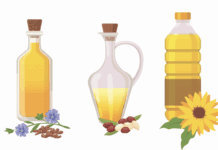A. Erika Hval, a dietetic intern at Tufts Frances Stern Nutrition Center, answers: The prickly pear cactus, sometimes referred to as the cactus pear (Optunia spp.), has been touted for a variety of health-related benefits from treating diabetes to alleviating alcohol-induced hangover symptoms. Found in Mediterranean and subtropical African and American zones, cactus pear plants are characterized by flattened stems (cladodes) and brightly colored, sweet-tasting fruits. In general, the stems supply high amounts of pectin and mucilage (both are soluble fibers) and minerals, while the fruits are abundant in vitamins, amino acids and betalains. There are about 20 calories in 100 grams of the cactus stems provides, while the same amount of cactus pear fruit pulp provides about 65 calories. Both the stems and the fruit are mostly composed of water (84%-95%), and a majority of calories come from carbohydrates.
Several research studies have identified anti-inflammatory properties of both the stem and fruit extracts; however, data elucidating how this may affect humans is lacking. There is some evidence to suggest that consumption of the stems may have a hypoglycemic effect, and could thus help control high blood sugar associated with diabetes. Cactus pear has also been shown in some studies to lower cholesterol, possibly due to its naturally occurring sterol content. Strong and conclusive evidence regarding the effects of pear cactus consumption is certainly limited; however, it can be assumed that its antioxidant, high fiber and vitamin/mineral content may lend some health benefits. As food industry specialists develop ways to improve the appeal and shelf life of the cactus pear (e.g., by using it to create specialty juices), its popularity among consumers and researchers alike may increase.



















